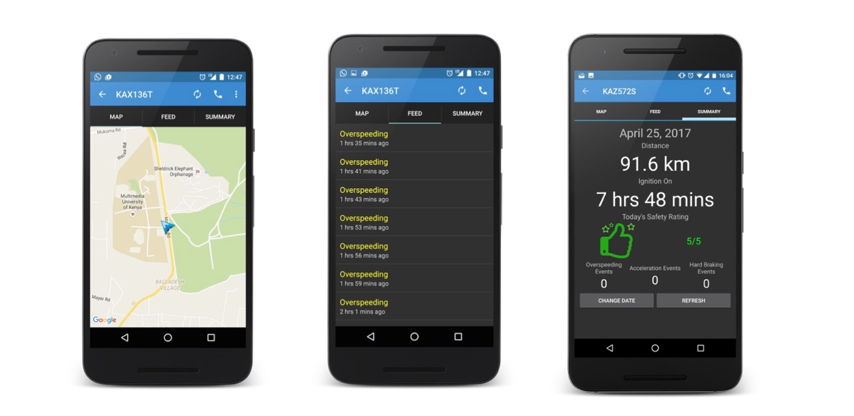
Monitoring technologies can improve firm performance, and importantly not at the expense of workers or society
A firm’s success rides heavily on the performance of its employees. It is therefore important that firms design employment contracts that properly incentivise good performance. This becomes more challenging when firms cannot observe the amount of effort employees invest, nor the amount of output they produce. In theory, firms can use monitoring technologies that reveal the performance of their workers more accurately to overcome this constraint (Holmstrom 1979). In practice, however, the impact of such monitoring technologies on contracts and employee performance is unclear. This can be because managers may not know how to leverage the additional information monitoring technologies reveal. Moreover, weak legal institutions, which prevent companies from credibly sanctioning bad behaviour, may limit the usefulness of the new information.
This begs the question of how monitoring technologies can affect firm operations, and worker welfare. We seek to answer this by examining the impact of moral hazard on labour contracting and productivity, and determine the extent to which improved monitoring can ease these frictions (Kelley et al. 2018). To this end, we implement a randomised controlled trial where we introduce a novel monitoring device to a subset of firms operating in Nairobi’s transit industry.
The transit industry
Nairobi’s transit industry is dominated by small-scale entrepreneurs that own a few minibuses, which they rent to drivers on a daily basis. Drivers operate the buses along designated routes and collect revenue in passenger fares. Rough estimates suggest that 15,000 to 20,000 buses currently circulate throughout the city, swerving on and off the road to collect passengers along their designated route. The presence of severe competition within a route explains the dangerous driving that prevails throughout the industry. According to the WHO, approximately 3,000-13,000 people die annually from traffic incidents in Kenya, and at least 30% of cases involve matatus (privately owned minibuses).
The technology
After multiple years of R&D, the research team introduced a monitoring device to 255 vehicle owners operating in Nairobi’s transit industry. We designed a novel mobile application that provides information about various aspects of the drivers’ operations to 125 treatment firms. The first tab indicates the location of the vehicle, and provides a historical overview of where the vehicle has been through the day. The second tab details the number of safety violations incurred (sharp-braking, sharp-turning, over-acceleration, and speeding). Finally, the last tab provides an overall summary of the day’s operations, including the number of kilometres driven and number of hours the ignition was on.
We confirm that 70% of owners consult the app weekly. This information provides treatment owners with a more precise estimate of what revenue should be, and whether drivers are engaging in behaviour that damages the vehicle. This has implications for the owners’ choice of contract and drivers’ behaviour, which ultimately impact firm profits/growth. We use daily surveys from vehicle owners and drivers over six months to track the impact of reducing asymmetric information on these outcomes.
Figure 1 The monitoring app

Notes: The monitoring app has three tabs: 1) A “Map” tab, which indicates where the vehicle is at any point in time; 2) A “Feed” tab, which indicates every safety violation that occurs and 3) A “Summary” tab which indicates the number of hours the vehicle was on, the number of kilometres driven, and an overall safety rating for the driver relative to other drivers on the same route.
What happens to firms?
We find that firm profits increase by 13% (approximately $600 over six months). These gains more than offset the cost of the device ($125), suggesting that a tracking device like the one we designed for this study would be a worthwhile investment for the employer if it were available on the market. Owners also report that monitoring their drivers has become significantly easier, and they trust their drivers more, consistent with a reduction in management costs. Subsequently, we ask whether this improved profitability, management, and fuelled business growth. We find that treatment owners have 0.145 more vehicles (11%) on average than control owners after six months. This suggests that inadequate monitoring may represent an important barrier to firm growth in low-income countries.
Firm profits can be affected by changes to the contract and worker behaviour. We first investigate contract change. Vehicle owners overwhelmingly use “target” contracts: they specify an amount of revenue (collected in fares) that the driver must deliver by the end of the day, where the driver keeps any revenue they earn above it. If the driver cannot make the target, they are supposed to provide the total revenue they earned to the owner. In practice, however, drivers under-report total revenue to make sure they have some income left over. They will continue to under-report until they earn enough revenue to hand over the target and keep enough income for themselves.
We find no evidence that the monitoring technology induces owners to change this type of contract. This could be because social norms are ingrained or that contracts are sticky and take time to change. We have some suggestive evidence, however, that owners change the terms of the contract by lowering the target they demand from drivers. Indeed, the monitoring technology reduces drivers’ information rents and lowers driver utility on average. Owners recognise this outcome and compensate by reducing the target.
The evidence further shows that drivers’ behaviour is affected by the monitoring technology in three ways:
- Drivers’ incentive to lie to owners about the total amount of revenue they collect in fares is reduced because owners have a more precise signal of what revenue should be. We find that under-reported revenue falls by approximately $1 per day (16%).
- Drivers are incentivised to increase effort to compensate for the income they lose from lower under-reporting. The number of hours drivers work increases by 1.4 hours per day (9.9%).
- We expect drivers to reduce instances of damaging driving because they are more likely to be caught by the owner. We proxy damaging driving by the amount of repair costs the owner incurs, and we find they decrease by $2 per day (46%). We have evidence to suggest this outcome comes from fewer instances of driving on alternate routes that are bumpy and damaging to the vehicle. These lower repair costs drive the profit results we observe above.
How about workers?
It is also important to investigate whether these benefits to firms come at the expense of their workers, as these technologies potentially concentrate all of the bargaining power in the hands of employers. We see some evidence of this as the amount of revenue drivers under-report falls, and drivers work more (although their salary per hour stays the same). However, proponents of these new technologies suggest that they increase employers’ trust in their employees, which makes for better managers. We have some suggestive evidence of this. In a qualitative survey we conducted after the experiment concluded, we find that 65% of drivers say the tracking device makes their job easier (26% say nothing changed). Many drivers cite “owners trust” as the reason why their job is less stressful with the device.
And…passengers?
The presence of monitoring devices can also have effects outside of the firm. In transit systems, monitoring technologies are used to limit instances of unsafe driving. Despite all the safety information we provided, the frequency of unsafe driving events does not change (these events do not include the damaging driving behaviour – namely off-route driving – we discuss above). It follows that the gains to firms do not come at the expense of commuters. However, these results also suggest that external intervention may be necessary to improve safety. We test the efficacy of one such intervention, by providing daily cash incentives ($6) to a random subset of drivers conditional on safe driving. We find that these cash incentives meaningfully reduce the number of safety violations committed by drivers (33% for speeding alerts, and 17% for sharp braking).
Policy implications
- Cost-effective monitoring technologies can be a worthwhile investment for companies looking to increase their profits and grow their asset base, helping to overcome the issue of moral hazard in labour contracting.
- Local transport authorities in Nairobi and South Africa have already started to discuss ways of introducing remote tracking solutions throughout the transportation industry to help monitor and record the behaviour of the drivers on the road. Our research suggests that while this will improve firm operations, more targeted interventions will be necessary if these devices are to induce safer driving.
- Our results suggest that gains to the firms do not necessarily come at the expense of society or workers in this setting. However, the generalisability of these results is limited by the scale of our study. These findings could change if monitoring devices are fitted to all of Nairobi’s matatus.
Editors' note: This column is based on research under the PEDL projects here and here.
References
Holmstrom, B (1979), “Moral hazard and observability”, The Bell Journal of Economics, 10(1): 74-91.
Kelley, G Lane and D Schönholzer (2018), “The Impact of Monitoring Technologies on Contracts and Employee Behavior: Experimental Evidence from Kenya’s Transit Industry”.


